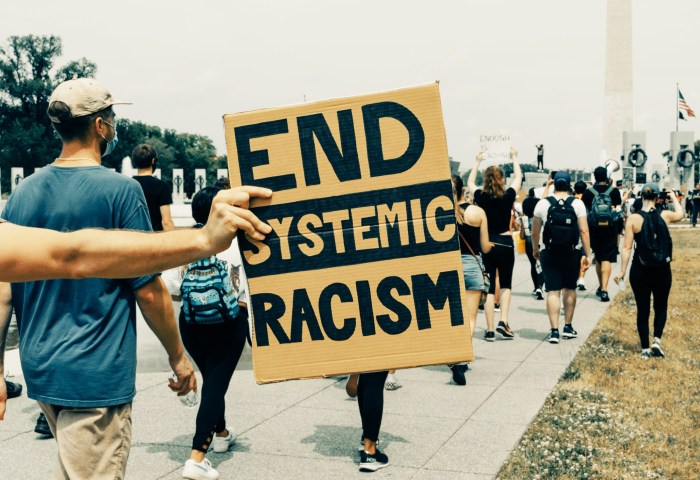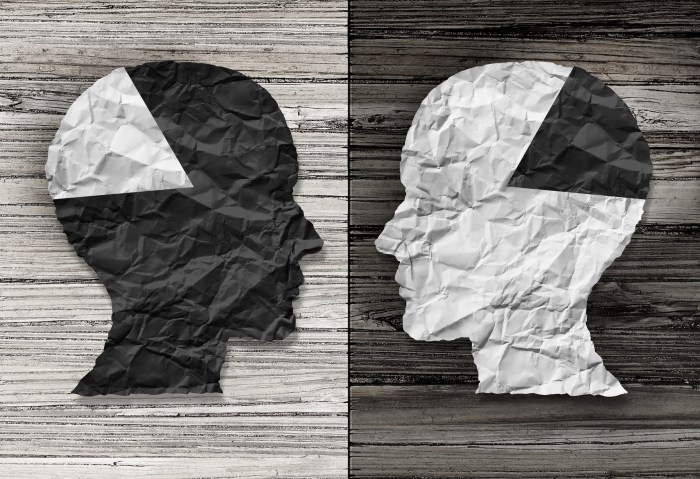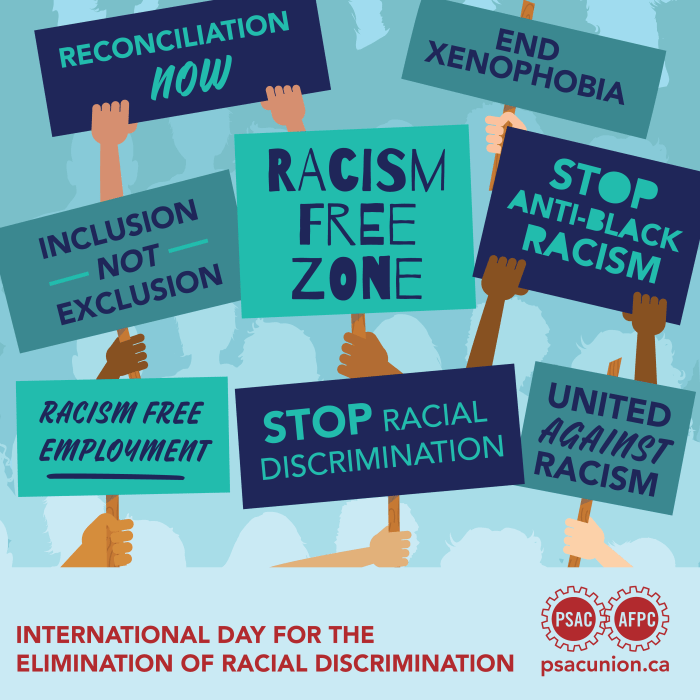Prejudice is to ________ as discrimination is to ________. This statement encapsulates the complex and interconnected relationship between prejudice and discrimination, two pervasive societal issues that have profound implications for individuals and society as a whole.
Prejudice, a negative attitude or belief towards a particular group or category of people, often manifests itself in discriminatory behaviors that limit opportunities, access to resources, and overall well-being.
Definitions and Explanations

Prejudice is a negative attitude or belief about a person or group of people based on their perceived membership in a particular category. It involves pre-judging someone without having sufficient knowledge or experience to form an informed opinion. Discrimination, on the other hand, is the unfair or prejudicial treatment of a person or group based on their actual or perceived membership in a particular category.
It involves actions or behaviors that limit or deny opportunities to individuals or groups based on their perceived characteristics.
Examples of prejudice include negative stereotypes, biases, and preconceptions about a particular group of people, such as racial or ethnic minorities, women, or people with disabilities. Examples of discrimination include unequal access to education, employment, housing, and healthcare based on race, gender, religion, or sexual orientation.
Prejudice and discrimination are often closely related, as prejudice can lead to discriminatory actions and behaviors. However, it is important to note that not all prejudice leads to discrimination, and not all discrimination is based on prejudice.
Social and Psychological Perspectives
Social and psychological factors contribute to prejudice and discrimination. Social factors include social norms, values, and beliefs that shape our perceptions and attitudes towards others. Psychological factors include cognitive biases, such as stereotyping and the tendency to generalize from limited information, as well as emotional factors, such as fear and anxiety towards perceived out-groups.
Prejudice and discrimination can manifest in overt forms, such as hate speech, violence, or segregation, or in more subtle, covert forms, such as microaggressions or unconscious biases. These forms of prejudice and discrimination can have significant impacts on individuals and society as a whole, including psychological distress, social isolation, and economic inequality.
Legal and Ethical Implications

Prejudice and discrimination have significant legal and ethical implications. In many countries, laws and policies exist to protect against prejudice and discrimination based on specific characteristics, such as race, gender, religion, or sexual orientation. These laws aim to ensure equal treatment and opportunities for all individuals, regardless of their perceived characteristics.
However, enforcing anti-discrimination laws and promoting equality can be challenging. Prejudice and discrimination can be deeply ingrained in social and institutional structures, making it difficult to address and eliminate. Additionally, proving discrimination can be difficult, especially in cases of covert or unconscious bias.
Strategies for Addressing Prejudice and Discrimination
Addressing prejudice and discrimination requires a multi-faceted approach involving individuals, communities, and institutions. Effective strategies include:
- Education and awareness-raising: Promoting understanding and empathy through education programs and campaigns can challenge stereotypes and reduce prejudice.
- Training and interventions: Providing training for individuals and organizations can help identify and address unconscious biases and promote inclusive practices.
- Social movements and advocacy: Grassroots movements and advocacy groups play a crucial role in raising awareness, challenging discriminatory policies, and promoting social change.
Case Studies and Real-World Examples
Numerous case studies and real-world examples illustrate the prevalence and consequences of prejudice and discrimination:
- Racial profiling: The practice of targeting individuals for suspicion or investigation based on their race or ethnicity has been documented in law enforcement and other settings.
- Gender discrimination: Women continue to face barriers in employment, education, and leadership positions, despite legal protections and efforts to promote gender equality.
- Religious discrimination: Individuals and religious communities have been subjected to discrimination and violence based on their religious beliefs or practices.
Cross-Cultural Perspectives: Prejudice Is To ________ As Discrimination Is To ________.
Prejudice and discrimination are not limited to any particular culture or society. However, the specific forms and manifestations of prejudice and discrimination can vary across cultures, influenced by cultural norms, values, and historical experiences.
Understanding cross-cultural perspectives on prejudice and discrimination is essential for promoting global cooperation and respect for diversity. It involves recognizing and challenging ethnocentrism, the belief that one’s own culture is superior to others, and promoting intercultural dialogue and understanding.
Historical Context and Evolution

Prejudice and discrimination have a long and complex history, shaped by social, economic, and political factors. Historically, prejudice and discrimination have been used to justify slavery, colonialism, and other forms of oppression.
Over time, social movements and legal reforms have challenged and reduced prejudice and discrimination, leading to greater equality and inclusion. However, prejudice and discrimination continue to persist in various forms, highlighting the need for ongoing efforts to address these issues.
Essential Questionnaire
What is the difference between prejudice and discrimination?
Prejudice refers to negative attitudes and beliefs towards a particular group, while discrimination involves actions or behaviors that result in unequal treatment based on those prejudices.
What are the consequences of prejudice and discrimination?
Prejudice and discrimination can lead to social isolation, economic inequality, and psychological distress for individuals, as well as societal divisions and conflict.
What can be done to address prejudice and discrimination?
Challenging stereotypes, promoting empathy, enacting anti-discrimination laws, and supporting organizations that work towards social justice are effective strategies for combating prejudice and discrimination.